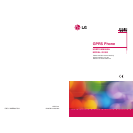
Road Safety
Mobile equipment may not use an ‘Alert’ device to cause a vehicle horn to
sound or lights to flash on receipt of a call on public roads.
• No installation instructions may show how to make such a connection
and the use of terms such as ‘horn relay’ are not accepted. Reference
may be made to a port enabling other apparatus to be controlled.
• User handbooks offering an ‘Alert’ facility are required to contain the
following text :
“The use of the Alert device to operate a vehicle’s lights or horn on
public roads is not permitted”.
It is advised that hand-held microphone or telephone handset should not
be used by the driver while the vehicle is moving, except in an emergency.
Speak only into a fixed, neck slung or clippedon microphone when it would
not distract your attention from the road.
Non-Ionising Radiation
User handbooks for mobile equipment shall draw attention to the following,
in the case of Class 1 transmitted output power (1W) for GSM 1800 or
Class 2 transmitted output power (8W) for GSM 900 equipment:
As with other mobile radio transmitting equipment, users are advised that
for satisfactory operation of the equipment and for the safety of personnel,
it is recommended that no part of the human body be allowed to come too
close to the antenna during operation of the equipment.
Installation instructions for vehicle mounted equipment shall include, for
Class 1 transmitted output power (1W) for GSM 1800 and Class 2
transmitted output power (8W) for GSM 900 equipment:
• The radio equipment shall be connected to the antenna via a non-
radiating cable (e.g. coaxial cables).
• The antenna shall be mounted in a position such that no part of the
human body will normally rest too close to any part of the antenna
unless there is an intervening metallic screen, for example, the metallic
roof.
ENGLISH
8
For Your Safety


















